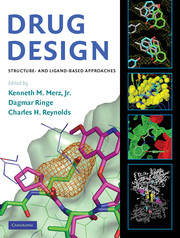Preface
Published online by Cambridge University Press: 06 July 2010
Summary
Our goal in producing this book is to provide a broad overview of the most important approaches used in protein- and ligand-structure-based drug design. Beyond this we aim to illustrate how these approaches are currently being applied in drug discovery efforts. We hope this book will be a useful resource to practitioners in the field, as well as a good introduction for researchers or students who are new to the field. We believe it provides a snapshot of the most important trends and capabilities in the application of modeling and structural data in drug discovery.
Since the 1990s the role of structure and modeling in drug discovery has grown enormously. There have been remarkable scientific advances in both the experimental and computational fields that are the underpinnings of modern drug design. For example, x-ray capabilities have improved to the point that protein structures are now routinely available for a wide range of protein targets. One only need look at the exponential growth of the Protein Databank (RCSB) for evidence. Tremendous strides have been made in all aspects of protein structure determination, including crystallization, data acquisition, and structure refinement. Modeling has made similar gains. Recent years have brought more realistic force fields, new and more robust free-energy methods, computational models for absorption/distribution/metabolism/excretion (ADME)-toxicity, faster and better docking algorithms, automated 3D pharmacophore detection and searching, and very-large-scale quantum calculations.
- Type
- Chapter
- Information
- Drug DesignStructure- and Ligand-Based Approaches, pp. ix - xPublisher: Cambridge University PressPrint publication year: 2010



